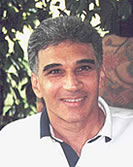Homeostasis (pronounced hohm-ee-oh-stay'-sis) was first articulated by the French scientist Claude Bernard (1813-1878) in his studies of the maintenance of internal stability. The term itself was coined by American physiologist Walter Cannon, author of The Wisdom of the Body (1832). "Homeostasis" is derived from the Greek words for "same" and "steady." Physiologically, the term refers to ways the body acts to maintain a stable internal environment in spite of the external environmental variations and disturbances. For example, when the weather is warm the body perspires, when the weather is cold the body shivers to keep warm. Both the brain and the body are endowed with a multitude of automatic mechanisms that counteract external influences tending toward instability.
A simple working definition for homeostasis would be 'dynamic self-regulation,' or the body's amazing ability to regulate itself.
Learning stroke production with the Tennis Warrior System is based on homeostasis. Many players and coaches are baffled as to how learning with minimum technical skills and maximum repetition can work. They underestimate the body's ability to regulate itself and find solutions to physical challenges. As such, coaches stand in the way of player's natural ability by forcing them to artificially respond to a myriad of technical procedures NOT compatible with the body's self-regulating system. The body in turn reacts by issuing a challenge back to the brain in a form of frustration and discouragement. Often the end result is a student who wonders if they will ever be able to perform all of these procedures and play tennis successfully!
Do you stand in your own way when learning stroke production? Understanding homeostasis will help you avoid this pitfall.
Even though homeostasis is a scientific term, I will use homeostasis to explain how it is possible to teach one or two procedures for a given stroke and, through repetition, mold a whole stroke. It's actually simple: You utilize the wisdom of the body.
If you cut yourself, your body's internal regulating system begins the healing process to bring the body back into balance. The cut issued a challenge to the body and the body automatically responded without YOU consciously helping. You can support that healing by an external dressing, but ultimately, in time, the body does the healing. This is homeostasis at work!
When you have a mild fever this is not a bad thing, it's a good thing! Your body senses a problem and raises your temperature to compensate. Homeostasis again! The body when issued a challenge automatically begins balancing itself to bring the body back into equilibrium. The fever is a mechanism used by the body to maintain balance. Without the fever you could be in big time trouble.
Even when you are healthy and have no obvious problems the body is still self-regulating in its natural, day-to-day functions. The body never stops. It is an amazing creation!
How does this all apply to tennis? Homeostasis in the body is maintained by natural self-regulating systems that work together to improve and maintain health; whereas homeostasis in tennis is maintained by natural self-regulating systems that work together to improve and maintain a stroke. In tennis those internal systems are made up of your sense of timing, judgment, balance, and muscle sense. Challenge these four systems through repetition, and the body, through homeostasis, will begin to correct itself and develop a stroke!
For example:
You hit a backhand and fall off balance in a clumsy fashion. To correct the problem you could think to yourself, the next time I hit a backhand I will recover my balance by making the left leg go that way and the right leg go this way to make sure I balance myself. Whatever is the latest super technique could be applied to solve the balance problem. Unfortunately, this will not work! Why? Because you are bypassing the body's natural regulating system and artificially enforcing a technique on it! You are forcing your body to do something it is NOT yet prepared to accept.
Actually, when the body fell off balance in the first place that was homeostasis working in its beginning stages. As clumsy as it was, your body was attempting to recover its balance. Your internal system simply needs more physical and mental data to recover automatically and instinctively. If you would just leave the physical and mental mechanism alone and continue issuing the same challenge over and over again one day your balance would improve. Why? Homeostasis! Your body's dynamic self-regulating system made up of your sense of timing, judgment, balance and muscle sense will determine the correct recovery balance for you. Your main job is to trust this system and give it time.
As you can see by this example most conventional systems of teaching tennis are in direct opposition to the natural way the body works. Conventional methods are constantly bucking the homeostasis process by forcing a host of mechanical skills on the body before it is ready.
You can use the homeostasis principle throughout your entire game WITHOUT forcing a plethora of techniques on yourself. Below are a few functions which include many that will solve themselves through repetition and homeostasis. A skillful teacher can help guide you along without interfering with the natural homeostasis process inherent in the body.
- Bending your knees
- Keeping your eye on the ball
- Getting too close to the ball
- Taking the racket back too late
- Balance while hitting
- Hitting the ball late
Every area of your game can improve if you will consistently issue mental and physical challenges to that area and trust the mind and body to figure it out. A challenge is no more than just doing a stroke over and over again with minimum procedures.
A good example of homeostasis that I like to use to demonstrate the power of the internal mechanisms is to practice balancing yourself on one foot. The first day you practice balancing on one foot you will be wobbling back and forth trying to maintain your balance. Each day for a month you practice doing the same thing and by the time the last day of the month rolls around, your balance has improved and the wobbling has been reduced significantly. Your internal regulating system has begun to figure out the problem and fine-tune your timing, judgment, balance and muscle sense. Externally there is now little movement, but internally there is constant intricate communication between the four senses. They are all working in harmony INTERNALLY to improve your balance EXTERNALLY. The same principle will hold true for stroke production. If you have not performed enough repetition to challenge your body's homeostasis mechanism to fine tune itself INTERNALLY, your body will not be ready to perform that stroke with any kind of consistency. No matter what you do EXTERNALLY!
Most coaches and players are focused exclusively on the external skills and ignore the internal senses that are the backbone of a players strokes. To avoid this pitfall you must understand homeostasis and the body's dynamic self-regulating system. Once you do you will begin developing your strokes in a more natural, automatic and instinctive fashion.
When your body is ready the stroke will appear!


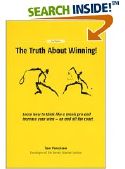
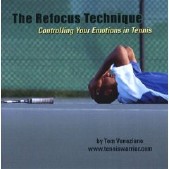
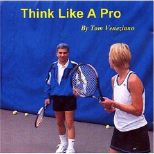
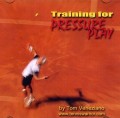



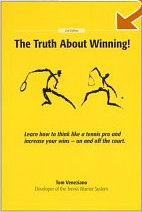
 You will join 13,000 other subscribers in receiving news of updates to the Tennis Server along with monthly tennis tips from tennis pro Tom Veneziano.
You will join 13,000 other subscribers in receiving news of updates to the Tennis Server along with monthly tennis tips from tennis pro Tom Veneziano. 